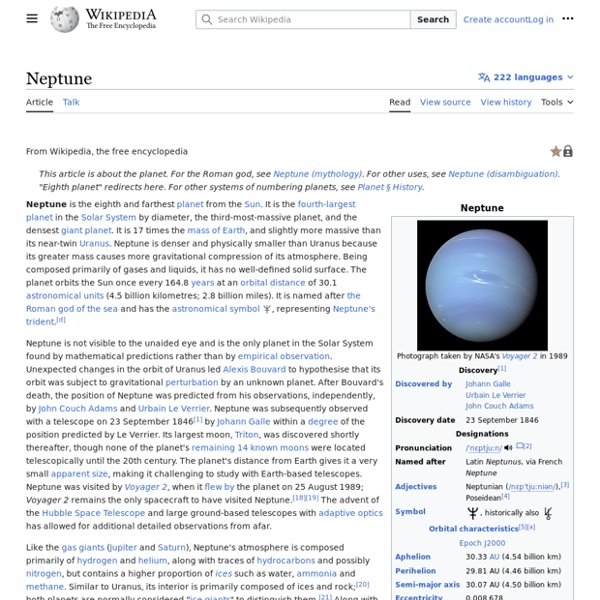Shirt of Nessus
In Greek mythology, the Shirt of Nessus, Tunic of Nessus, Nessus-robe, or Nessus' shirt was the poisoned shirt that killed Heracles. It was once a popular reference in literature. In folkloristics, it is considered an instance of the "poison dress" motif.[1] Mythology[edit]
Tisiphone
Tisiphone (Ancient Greek: Τισιφόνη), or Tilphousia, was one of the three Erinyes or Furies. Her sisters were Alecto and Megaera.[1] She was the one who punished crimes of murder: parricide, fratricide and homicide. In literature[edit] In Book VI of Virgil's Aeneid, she is described as the guardian of the gates of Tartarus, 'clothed in a blood-wet dress'.[2] In Book X of Virgil's Aeneid, she is described as 'pale' and raging 'among the warring thousands' during the battle between Mezentius and Aeneas's men.[3]
Aeschylus
ancient Athenian tragic playwright Aeschylus (,[1] ;[2] Greek: Αἰσχύλος Aiskhylos, pronounced [ai̯s.kʰý.los]; c. 525/524 – c. 456/455 BC) was an ancient Greek tragedian. He is often described as the father of tragedy.[3][4] Academics' knowledge of the genre begins with his work,[5] and understanding of earlier tragedies is largely based on inferences from his surviving plays.[6] According to Aristotle, he expanded the number of characters in the theatre and allowed conflict among them; characters previously had interacted only with the chorus.[nb 1]
Deianira
Ancient Greek mythical character Deianira, Deïanira, or Deianeira[1] (/ˌdeɪ.əˈnaɪrə/;[2] Ancient Greek: Δηϊάνειρα, Dēiáneira, or Δῃάνειρα, Dēáneira, [dɛːiáneːra]), also known as Dejanira,[3] was a figure in Greek mythology whose name translated as "man-destroyer"[4] or "destroyer of her husband".[5][6] She was the wife of Heracles and, in late Classical accounts, his unwitting murderer, killing him with the poisoned Shirt of Nessus. She is the main character in Sophocles' play Women of Trachis. Mythology[edit] Family and marriage[edit]
Erinyes
Female chthonic deities of vengeance In ancient Greek religion and mythology, the Erinyes (; sing. Erinys , ;[1] Greek: Ἐρινύες, pl. of Ἐρινύς, Erinys),[2] also known as the Furies, were female chthonic deities of vengeance, sometimes referred to as "infernal goddesses" (χθόνιαι θεαί). A formulaic oath in the Iliad invokes them as "the Erinyes, that under earth take vengeance on men, whosoever hath sworn a false oath."[3] Walter Burkert suggests they are "an embodiment of the act of self-cursing contained in the oath
Danaïdes
mythical characters Mythology[edit] Danaus did not want his daughters to go ahead with the marriages and he fled with them in the first boat to Argos, which is located in Greece near the ancient city of Mycenae. Danaus agreed to the marriage of his daughters only after Aegyptus came to Argos with his fifty sons in order to protect the local population, the Argives, from any battles. The daughters were ordered by their father to kill their husbands on the first night of their weddings and this they all did with the exception of one, Hypermnestra, who spared her husband Lynceus because he respected her desire to remain a virgin. Danaus was angered that his daughter refused to do as he ordered and took her to the Argives courts.
Deucalion
Deucalion from "Promptuarii Iconum Insigniorum" Etymology[edit] According to folk etymology, Deucalion's name comes from δεῦκος, deukos, a variant of γλεῦκος, gleucos, i.e.
Tiresias
Tiresias strikes two snakes with a stick, and is transformed into a woman by Hera. Engraving by Johann Ulrich Kraus c. 1690. Taken from Die Verwandlungen des Ovidii (The Metamorphoses of Ovid). In Greek mythology, Tiresias (/taɪˈriːsiəs/; Greek: Τειρεσίας, Teiresias) was a blind prophet of Apollo in Thebes, famous for clairvoyance and for being transformed into a woman for seven years.
Keroessa
Story[edit] According to the historian Hesychius of Miletus,[3] as Io, changed into a heifer and being chased by a gadfly on behalf of the jealous Hera, was passing through Thrace, she gave birth to a girl, Keroessa, on the banks of the Golden Horn, by the altar of the nymph Semestra. Keroessa was reared by Semestra and grew up surpassing other local maidens in beauty. She had intercourse with Poseidon and in due course gave birth to a son, whom she named Byzas. He became the founder of Byzantium and named the Golden Horn (Greek Χρυσόκερας) after his mother.
Jupiter
Fifth planet from the Sun in the Solar System Formation and migration Astronomers have discovered nearly 500 planetary systems with multiple planets.
Juno
From Wikipedia, the free encyclopedia Jump to navigationJump to search Juno could mean: Music[change | change source] Vehicles[change | change source]
Leto
Greek mythological figure and mother of Apollo and Artemis The island of Kos is claimed to be her birthplace. However, Diodorus, in 2.47 states clearly that Leto was born in Hyperborea and not in Kos.[2] In the Olympian scheme, Zeus is the father of her twins,[3] Apollo and Artemis, which Leto conceived after her hidden beauty accidentally caught the eye of Zeus. Classical Greek myths record little about Leto other than her pregnancy and search for a place where she could give birth to Apollo and Artemis, since Hera in her jealousy caused all lands to shun her.
Pyramus and Thisbe
Plot[edit] In Ovid's Metamorphoses, Pyramus and Thisbe are two lovers in the city of Babylon who occupy connected houses/walls, forbidden by their parents to be wed, because of their parents' rivalry. Through a crack in one of the walls, they whisper their love for each other. They arrange to meet near Ninus' tomb under a mulberry tree and state their feelings for each other. Thisbe arrives first, but upon seeing a lioness with a mouth bloody from a recent kill, she flees, leaving behind her veil.
Juno
From Wikipedia, the free encyclopedia Jump to navigationJump to search Juno may refer to:



